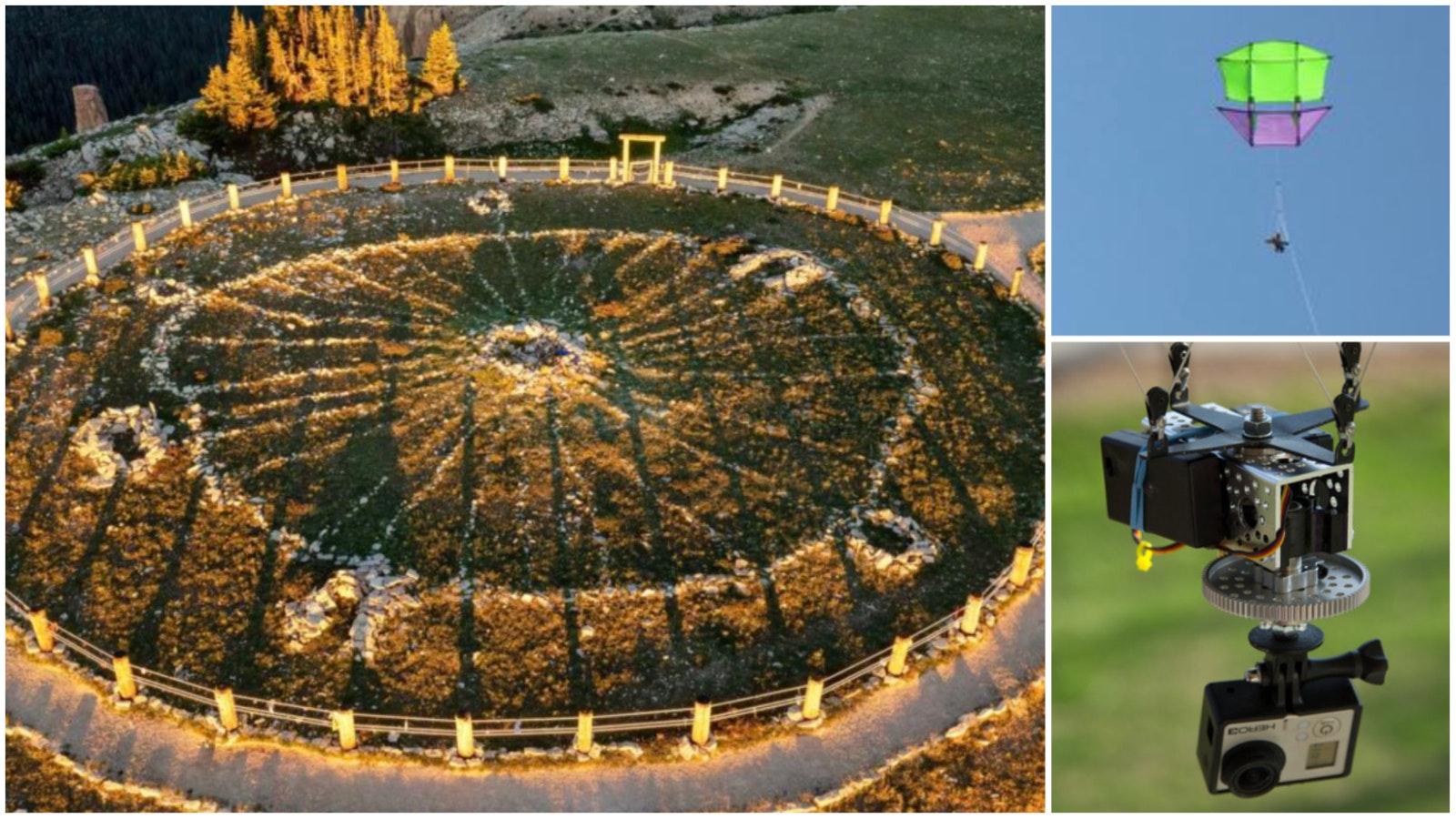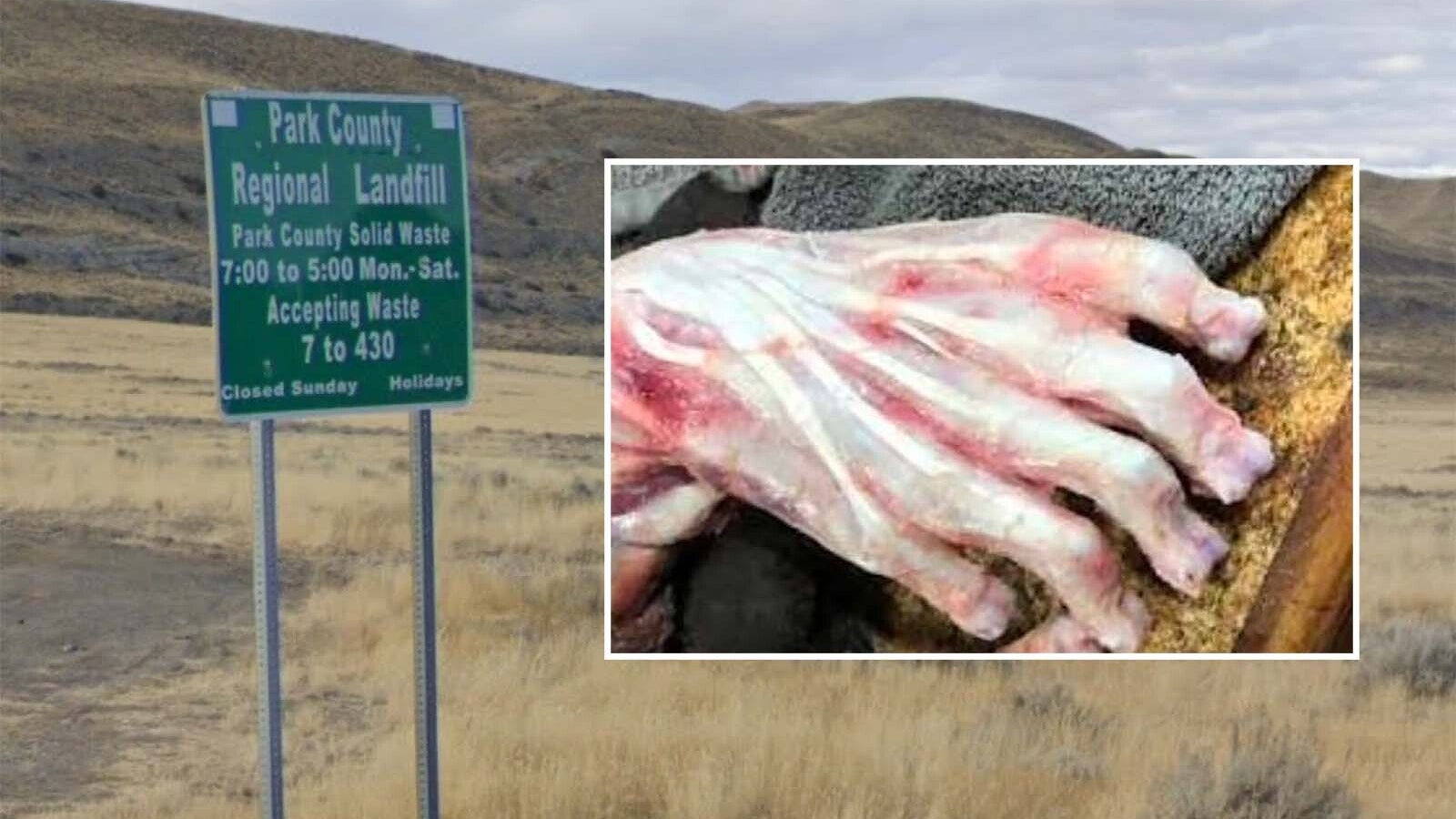Northern Arapaho and Eastern Shoshone tribal members say flying a kite above the Medicine Wheel in the Big Horn Mountains to get aerial photos of the site was not acceptable.
An aerial kite photo by Sheridan photographer Tim Doolin posted recently on social media has raised several jurisdictional questions, including about photographing sites sacred to Native Americans.
The kite photo wasn’t any different than it would be to take pictures inside a church without worshippers’ blessing, Crystal C’Bearing told Cowboy State Daily on Thursday. She’s deputy director of the Northern Arapaho Tribal Historic Preservation Office in Riverton.
“It’s considered a very sacred place by many tribes,” C’Bearing said. “It is an active site for prayer. I wouldn’t want anybody up there taking pictures of people praying. To get a kite up there, to me, that’s something that needs to be addressed.”
Eastern Shoshone elder Willie LeClair of Fort Washakie agrees.
“He (the photographer) is just piecemealing the envelope, saying ‘it was a kite, and not a drone,’” LeClair told Cowboy State Daily on Thursday. “He knows it is sacred. What was he doing?”
If there are regulations against aerial photography of the site, they should apply to all methods, LeClair said.
“It should be for any aerial photo, even if you’re riding on the back of an eagle,” he said.
Controversial Photo
The post of Doolin’s photo on Facebook quickly drew criticism. Commenters said that what Doolin had done was illegal, because the U.S. Forest Service doesn’t allow drone flights at the Medicine Wheel. Others said that he had disrespected the sacred nature of the site.
Doolin told Cowboy State Daily on Wednesday that he had used a “custom kite rig,” not a drone, to get the shot of the Medicine Wheel at sunrise.
A Matter Of Respect
LeClair said he has visited the Medicine Wheel and performed a sacred pipe ceremony there.
“The rangers were very cordial to me whenever I went up there,” he said. “When I went to do my pipe ceremony and I asked the ranger how close I could get, he said, ’this is your site.’”
LeClair said rangers offered to clear the area of other people while he worshipped, but he asked only that the rangers not allow anybody to take photographs.
Ground-based photographs of the Medicine Wheel by itself are allowed by the Forest Service, according to agency regulations.
“I just wanted to make sure there was nobody snapping photos when I was in there praying,” LeClair said.
With any Native ceremony or site, he said nonnatives should “use the big ‘C’ – communicate” and ask permission from Natives before taking photos.
Origin, Jurisdiction, Regulations
The exact age and origin of the Medicine Wheel are unknown. It’s thought to be anywhere from 500 to 1,500 years old, although some have claimed it could be up to 5,000 years old.
LeClair said the origins of the Medicine Wheel in the Big Horn Mountains might never be fully understood.
“All I know are the stories that it was built by the Old People, the Ancient Ones,” he said.
It’s at the top of the Big Horn Mountains between Lovell and Sheridan on the Bighorn National Forest. Forest Service officials confirmed Wednesday that drone flights are forbidden above the Medicine Wheel, but the agency’s regulations don’t specifically mention kites.
The Medicine Wheel also a National Historic Landmark, which also brings it under the jurisdiction of the National Park Service and the Wyoming State Historic Preservation Office. Calls and an email for comments from SHPO weren’t returned Thursday.
Sacred Unity
No one tribe claims the Medicine Wheel, C’Bearing said. It’s part of a sacred spiritual unity among the Arapaho, Crow, Cheyenne, Lakota, Blackfeet and others.
“Before we were categorized as tribes, we did a lot of ceremonies together,” she said. “There are a lot of similar stories (regarding the Medicine Wheel).”
The Medicine Wheel “is the same as spiritual sites all over the world,” LeClair said. “Throughout the Indian world, we as Indians really respect the gift the Creator gave us through these sacred places.”





